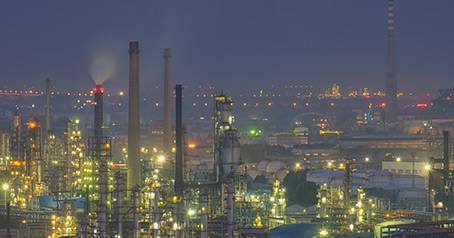Nov . 21, 2024 14:33 Back to list
ppr water pipe
Understanding PPR Water Pipes A Comprehensive Guide
In the world of plumbing and construction, the materials we choose for water delivery systems play a crucial role in the efficiency, safety, and longevity of the infrastructure. Among the various options available, PPR (Polypropylene Random Copolymer) water pipes stand out due to their unique characteristics and advantageous properties. This article aims to provide a comprehensive overview of PPR water pipes, including their composition, benefits, applications, and installation processes.
Composition and Characteristics
PPR pipes are made from a type of plastic known as polypropylene, specifically designed to withstand high temperatures and pressures. This material is known for its chemical resistance, lightweight nature, and durability. The random copolymer structure improves flexibility and impact resistance, making PPR pipes an excellent choice for various plumbing applications.
One of the noteworthy characteristics of PPR pipes is their ability to handle water temperatures ranging from freezing to 95 degrees Celsius (203 degrees Fahrenheit), with occasional exposure to even higher temperatures. This thermal tolerance, coupled with a high tensile strength, allows for a wide range of applications in both hot and cold water systems.
Benefits of PPR Water Pipes
1. Corrosion Resistance One of the most significant advantages of PPR pipes is their excellent resistance to corrosion. Unlike traditional metal pipes, which can rust and degrade over time, PPR pipes remain unaffected by water quality and chemical composition, ensuring a longer lifespan.
2. Leaching Prevention PPR pipes do not leach harmful substances into the water, making them a safe choice for drinking water systems. This property is crucial for maintaining water quality and safety for consumers.
3. Cost-effectiveness While the initial investment in PPR pipes may be slightly higher than that of other plastic options, their longevity, low maintenance requirements, and energy efficiency often lead to lower overall costs in the long run.
4. Eco-friendly PPR pipes are recyclable, contributing to environmental sustainability. The manufacturing process of PPR pipes also typically has a lower carbon footprint compared to metal pipes.
5. Ease of Installation PPR pipes are lightweight, which simplifies the transportation and installation processes. They can be easily cut, joined, and fitted, making them a preferred choice for both professionals and DIY enthusiasts.
Applications of PPR Water Pipes
PPR water pipes are incredibly versatile, finding applications in various sectors, including
ppr water pipe

- Residential Plumbing PPR pipes are commonly used in residential water supply systems for both hot and cold water, ensuring a reliable delivery system for households.
- Commercial Buildings Due to their durability and resistance to heat, PPR pipes are an ideal choice for commercial plumbing systems, such as hotels, offices, and educational institutions.
- Industrial Uses PPR pipes are frequently utilized in industrial settings where corrosive chemicals and high temperatures are present. Their chemical resistance makes them suitable for transporting a range of industrial fluids.
- Irrigation Systems In agricultural settings, PPR pipes are used for irrigation due to their ability to handle varying pressures and ensure smooth water flow.
Installation Process
The installation of PPR pipes involves several key steps to ensure the integrity and efficiency of the water supply system
1. Planning Before installation, a thorough assessment of the plumbing layout is necessary. This includes determining the size and length of pipes needed.
2. Cutting PPR pipes can be easily cut to size using a pipe cutter or saw. It’s essential to ensure that the cuts are clean to avoid leaks.
3. Joining PPR pipes are commonly joined using heat fusion. This process involves heating the pipe and fitting ends until they soften, then joining them together and allowing them to cool to form a solid bond.
4. Testing Once the installation is complete, it is vital to test the system for leaks and pressure integrity before putting it into operation.
Conclusion
In conclusion, PPR water pipes represent a modern solution for plumbing and water delivery systems. Their unique properties, such as corrosion resistance, ease of installation, and eco-friendliness, make them a preferred choice for various applications. As water quality and sustainability become increasingly important in our daily lives, understanding the benefits and characteristics of materials like PPR will play a significant role in shaping efficient and safe plumbing systems for the future. Whether for residential, commercial, or industrial use, PPR pipes are undoubtedly a reliable option that can meet the demands of modern water supply needs.
-
High-Quality PPR Pipes and Fittings Durable ERA PPR & PVC PPR Solutions
NewsJul.08,2025
-
Black HDPE Cutting Board - Durable, Non-Porous & Food Safe HDPE Plastic Cutting Board
NewsJul.08,2025
-
High-Quality CPVC Panel Durable HDPE & PVC Panels Supplier
NewsJul.08,2025
-
Double PE Welding Rod Supplier - High Strength, Durable & Versatile Welding Solutions
NewsJul.07,2025
-
High-Quality PVC-O Pipe Supplier Durable 75mm PVC Pipe & Connections Leading PVC Pipe Company
NewsJul.07,2025
-
HDPE Drainage Pipe Supplier – Durable & Corrosion-Resistant Solutions
NewsJul.06,2025

